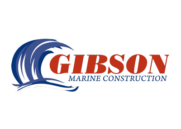Seawall FAQs
This article answers some of the most frequently asked questions about seawalls. With over 30 years in the industry building quality, customized seawalls our team at Gibson Marine Construction has the knowledge and experience to answer all of your seawall questions.
If you are a newcomer to Florida, or just new to living on the waterfront, you may want to learn some basic information about waterfront properties and the marine structures that protect them. So, let’s start by answering some general questions about seawalls.
What is a Seawall?
A seawall is a marine structure, also often referred to as an embankment, that defends a waterfront property’s shoreline from erosion and potential flooding. It’s also a type of coastal defense solution that helps protect the land (your property) from the impact of the “sea” or wave action from the water.
What Does a Seawall Look Like?
Seawalls come in a variety of shapes and sizes. And they can be constructed from various materials such as performance vinyl and composite sheet piling, stone (rip rap), concrete, or specialty treated wood. Most seawalls have a vertical or sloping structure and can be smooth, step-faced or curved-faced. But they are all marine structures built to protect the shoreline from the water. The stability of a seawall is dependent on a variety of variables such as wall height, sheet pile length and strength, wale system, backfill, foundation soil and tide. And since each seawall project has its own unique set of requirements, Gibson Marine Construction builds each seawall using top-quality products and creates a design plan to meet each job’s unique challenges.
What is the Purpose of a Seawall?
A seawall helps to protect a waterfront property from various types of damage that the water can cause to the land. Various jobs seawalls perform include:
- Helping to defend against erosion
- Serving as a barrier to protect against potential flooding and minimize the potential damage caused by large heavy waves from storms and hurricanes
- Protecting waterfront structures from wave action and corrosion.
What is the Main Drawback of a Seawall?
Seawalls require regular inspections and maintenance. If left unchecked for an extended period of time, seawalls could require extensive repairs and/or eventually fail leading to extensive and expensive property damage.
Do I Need a Seawall?
Most structures built close to a body of water could benefit from a seawall. If water is encroaching on your land or structures or it is causing damage to your property, a seawall could help minimize or even prevent further damage by creating a protective barrier between your property and the water.
Looking For More Information?
Seawalls
Choosing the right type of seawall can be a complex process, which is why Gibson-Marine is here to help. In this page, we will discuss the different types of seawalls, their benefits and how we can help you today.
Seawalls-101
If you need a brief overview of Seawalls, we've got you covered in this quick read: Seawalls-101! Dive on in and see why seawalls can be necessary to protect your land. We'd love to talk with you and see how Gibson Marine can help you today.
Gallery
Gibson Marine has been servicing the greater Tampa Bay area for over 30 years now! We are proud of each and every project we have worked on and would love to share the photos with you. Check out our Gallery page to see the latest projects.

